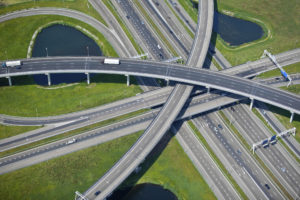
Resource site for fleet management professionals – FleetScience.com
March 1, 2017
Consumer grade vs enterprise smartphones – A no brainer
May 7, 2017Routing is not a one size fits all. Each business has different needs and goals that dictate the best solution. When there is more than one way to route, such as standard or dynamic routing, it can be challenging to know which routing method will make you most efficient, keep costs low or keep your customers happy. The bottom line, smart fleets needs to maximise efficiencies wherever possible.
First, it is key to understand the two main types of routing which are standard and dynamic.

Standard routing
Standard routing, or sometimes referred to as template routing, locks in the order sequence and routes. Considerations such as customer time windows and load capacity are irrelevant. The benefits of standard routing are consistent customer service. Drivers see the same customer allowing the driver to build a rapport with the customer and orders are delivered at the same time. The same truck can be assigned on the same routes each day. Additionally, new orders need to be added manually making sure there are no imbalance.
However, focusing on consistent customer service can increase the costs of delivery. The driver may be driving all over the city and driving equipment with an unbalanced load which could be half full or too full. Of course, these imbalances can be fixed, but this requires manual planning.
Dynamic routing
Alternatively, Dynamic routing creates routes based only on the orders in the system. With dynamic routing, you are only looking at the orders you have today. Stops are clustered geographically, and routes are created based on variables such as how many vehicles you have, total run-time, business constraints, and service times.
There are several variations to dynamic routing, including cell routing and zone routing. Cell routing has a physical boundary whereas, with zone routing, you can get around that with flexibility between zones.
The benefits of dynamic routing can include fewer trucks, improved sequencing of stops, and reduced kilometres and run time. Some cons are that customers could lose consistency of drivers and drivers are unfamiliar with territories.
So, which way should you route?
Each business is unique and what works for your company could be drastically different from another. You need to consider things like the number of customers with orders, customer locations, the number of drivers, the types of equipment, and time windows.
It is also imperative that you consider your business goals when deciding what type of routing works best for you. You will need to consider customer relationships as well as cost, distance, and equipment efficiencies.
Contact us today if you are re-evaluating your current routing procedures.
About us
Market Motion provide fleet management solutions, strategic consulting and software implementation. We work with you to grow your business, reduce your fleet costs, improve safety and customer satisfaction while giving you greater control and visibility into your operations.

